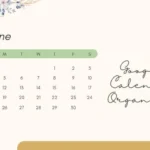To-do lists are extremely tedious.
An anxious person will tend to become anxious when the to-do lists aren’t completely.
And we all know “All work and no play makes Jack a dull boy”.
Therefore, to save you from the exhaustion, in this article we will explore the theme Time-blocking and how to efficiently implement this in our workspaces.
What Is Time Blocking?
Time blocking is the practice of scheduling specific blocks of time on your calendar for tasks, rather than working off an open-ended to-do list. You assign a dedicated slot to everything—from deep work and admin tasks to breaks and personal routines.
It helps you:
-
Stay focused on one task at a time
-
Avoid multitasking
-
Set realistic limits for your day
-
Prevent burnout and overbooking
Why Use Google Calendar for Time Blocking?
Google Calendar is ideal because:
-
It’s free and cloud-based
-
Offers color coding for visual clarity
-
Integrates with Gmail, Zoom, Tasks, and more
-
Syncs across devices
-
Offers drag-and-drop editing for flexibility
How to do Time blocking with Google Calendar (Organize Your Entire Week)
Step-by-Step: How to Time Block with Google Calendar
1. Start with a Weekly Template
Before filling in your calendar, outline a standard weekly routine. Block out:
-
Sleep & personal care
-
Work hours
-
Meals
-
Commute
-
Exercise
-
Chores or errands
-
Leisure & family time
🛠️ Pro Tip: Use the “Week” view and set Monday as your first day for better structure.
2. Define Your Core Categories
Common categories to block:
-
Deep Work: focus-heavy tasks (e.g., writing, coding, designing)
-
Meetings: fixed-time discussions or calls
-
Admin: emails, billing, scheduling
-
Breaks & Lunch
-
Learning: courses, reading
-
Personal/Wellness: exercise, journaling, hobbies
3. Color Code Your Blocks
Color-coding makes your week instantly scannable. Try this example:
| Category | Color |
|---|---|
| Deep Work | Navy Blue |
| Meetings | Red |
| Admin | Gray |
| Personal Time | Purple |
| Exercise | Green |
| Breaks | Light Yellow |
| Learning | Teal |
🎨 Hack: Use the Chrome extension “Custom Calendar Colors” for custom hex codes.
4. Create Recurring Time Blocks
Save time by setting recurring events for:
-
Morning routine (Daily 7:00–8:00 AM)
-
Lunch (Weekdays at 1:00 PM)
-
Deep work (Mon–Fri 9:00–11:00 AM)
-
Weekly planning session (Sundays at 7:00 PM)
5. Batch Similar Tasks Together
This technique reduces task-switching fatigue.
Example:
-
Monday AM: Plan, emails, schedule
-
Tuesday–Thursday AM: Deep work
-
Friday PM: Admin wrap-up, goal review
💡 Tip: Give each day a “theme” (e.g., “Marketing Monday,” “Finance Friday”).
6. Use Descriptions & Attachments
Inside each block, include:
-
Task lists
-
Links to documents or Zoom meetings
-
Short goals (e.g., “Finish 3 slides” or “Reply to client emails”)
7. Add Buffers and Transition Time
Don’t block your day edge-to-edge. Add 15–30 minutes between tasks for:
-
Prep
-
Breaks
-
Overflows
🔔 Hack: Use notifications for 10–15 minute warnings before each block starts.
8. Stay Flexible: Drag, Drop, Adjust
Life happens. If something runs late or you miss a block:
-
Drag the event to a later time
-
Don’t delete—reschedule!
-
Review weekly to adjust time estimates
9. Use Focus Mode (Optional)
If your calendar is connected to Google Workspace:
-
Turn on “Focus Time” (acts like Do Not Disturb)
-
Automatically declines meetings during deep work
Time Blocking Example: A Productive Workday
Here’s what a time-blocked weekday might look like:
| Time | Block | Purpose |
|---|---|---|
| 7:00–8:00 AM | Morning Routine | Wake up, journal, meditate |
| 8:00–9:00 AM | Email & Admin | Clear inbox, check agenda |
| 9:00–11:00 AM | Deep Work | Client project |
| 11:00–11:30 AM | Break | Coffee, walk |
| 11:30–12:30 PM | Meeting | Team sync |
| 12:30–1:30 PM | Lunch | Eat & recharge |
| 1:30–3:00 PM | Deep Work | Content creation |
| 3:00–3:30 PM | Admin | Invoices, tools |
| 3:30–4:30 PM | Learning/Reading | Skill building |
| 4:30–5:00 PM | Planning | Plan tomorrow, wrap up |
Bonus: Weekly Review & Replanning
Every week, set a recurring event to:
-
Review what worked
-
Reschedule missed blocks
-
Plan next week with realistic goals
Bonus Tools & Extensions
-
Toggl – time tracking with Google Calendar integration
-
Clockwise – automatically optimizes your work calendar
-
Notion or Trello – pair with GCal for task/project sync
-
Google Tasks – checklist next to your calendar
See Also:
-
Why is Someone Who I Have Never Chatted to Before in My Recent List on Snapchat?
-
[14 Ways] Fix: WhatsApp call Disconnects after 1 minute or 2 minute (Automatically)
With these tips and tricks you are now all set to have an amazing week ahead.
Sometimes, you need to take a break and not be a workaholic.
It is essential for your mental and physical health.









